Mountain Town (2006)
This documentary looks at the stories of a few people in Aspen Colorado and how they contribute to the community.
This documentary looks at the stories of a few people in Aspen Colorado and how they contribute to the community.
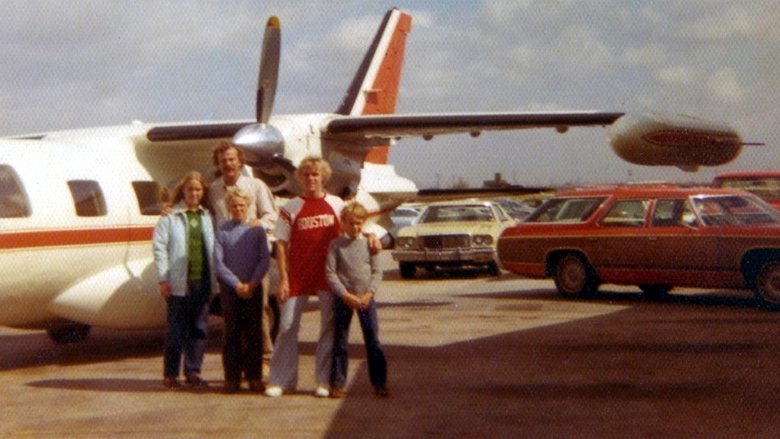
Imagine the defining moment of your life. Then imagine never talking about it with anyone. This sets the stage for the documentary film 3 Days 2 Nights. In 1974, Mark and Andy Godfrey went on a family ski vacation to Aspen, Colorado. Tragically, the plane they were traveling on crashed. The world, as they knew it, was changed forever. Mark and Andy, who were 11 and 8, survived 3 days and 2 nights in the frigid mountains of Colorado. For nearly 40 years they rarely discussed the crash even between themselves. This is a film about two brothers coming to grips with the defining moment of their lives. Their story is one of cathartic discovery in hopes of reconciling such a tragedy. It's about how the twin beacons of love and family can help overcome even the greatest of losses.
A meditative stroll through Sacramento landmarks, from the gentrified to the urban.
African men dance, sing and play instruments.
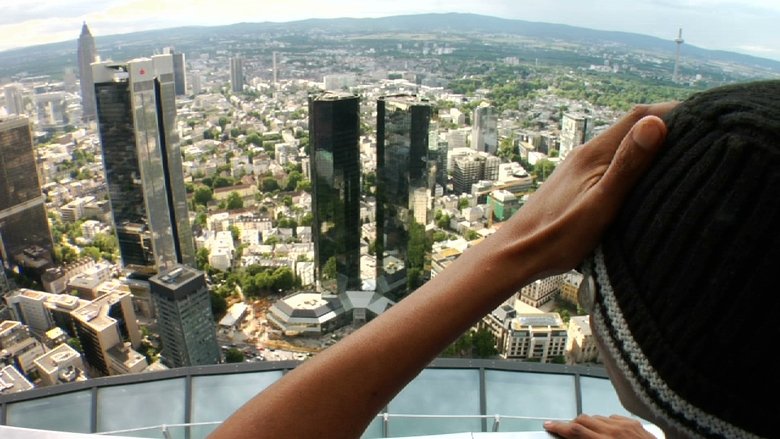
Remember the culture clash in THE GODS MUST BE CRAZY? This time it's real. One of the most ancient cultures on our planet is undergoing a major change. The Ju/Hoansi Bushmen in Namibia are not allowed to hunt anymore and need to converge with our so called “civilized” lifestyle. For the first time the Ju/Hoansi Bushmen travel through the Kalahari and then right into the heart of Europe. What starts as a look at their fascinating culture becomes an even more fascinating look at our Western lifestyle. A warm and humorous reflection of our habits through the eyes of people who are about to give up their million year old traditions.
A 16-minute short shot with a totally subjective eye; conveys the mythic life sense and social elements of a people who live in the world's highest mountains.
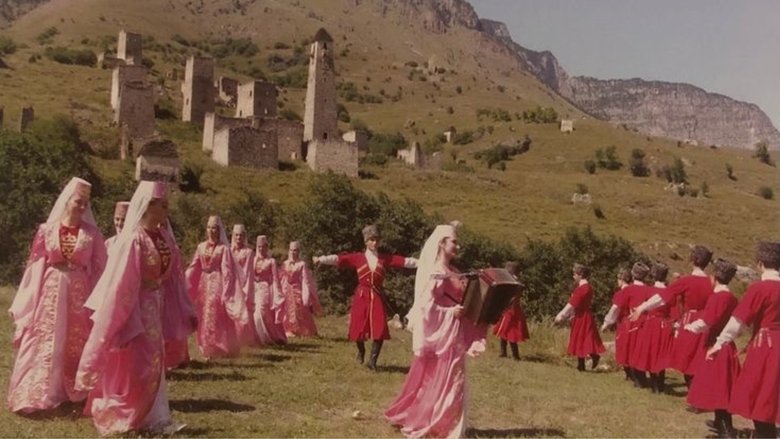
Film about the singing and dancing culture of the Ingush people
A young woman in traditional Japanese attire fixes her hair and kimono while her servants assist her.
“The picture [shows] a number of Esquimaux picking nickels from cracks in a board with their dog whips, in which sport they are very expert. In the background will be seen one of their "Topeks," a sealskin tent in which they live during their short summer.” (Edison catalog)
“One of the principal features at the Pan-American Exposition is the Alaskan or Esquimaux Village. In this most interesting exhibit, scenes are enacted just as they take place in the far away frozen North. In this subject we depict a large number of Esquimaux clothed in their native costumes and seated on their sleds, which are drawn by spans of four Esquimaux dogs. They are engaged in a race and are to be seen running over the ice and snow at a high rate of speed. There is a pond in the foreground of the picture on the shores of which the home stretch of the race takes place. The picture is perfect photographically, and the figures stand out clear and sharp, throwing a most perfect reflection on the pond.” (Edison film company catalog)
A woman from the Ashanti tribe bathes her child in a shallow bowl.
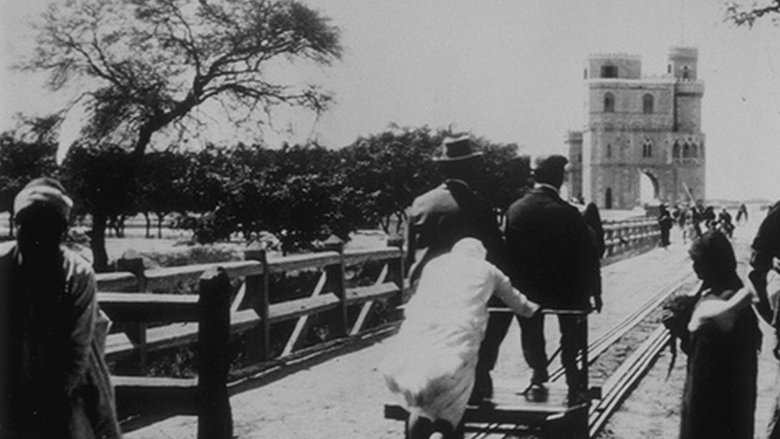
Travellers, nomads and salesmen make their way along a dam next to the Nile.
A man demonstrates a human-powered water wheel that irrigates a rice field.
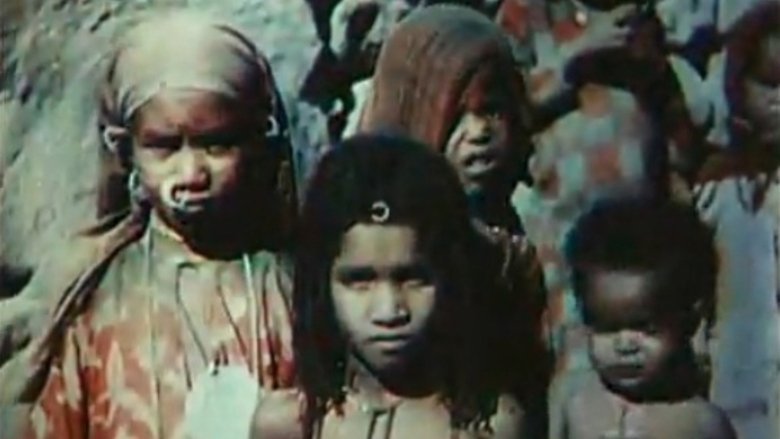
With a dual motion a cruise ship and a fishing boat pass one another on the Nile and butlers in turbans set up a wooden gangway. Thanks to a rope and pulley system cows climb skywards then disappear into the hold of the sailing vessel. On the bank, black-haired women rock back and forth, bursting out laughing and showing the first signs of going into a state of trance. Never-before filmed gestures and faces of the people of the Nile succeed one another, uprooted to an unknown, magical world. The Banks of the Nile is one of the first experiments of film in colour that uses the Kinemacolor process.

The film tells the story of ancient Ingush lullabies - Ingush women and men tell the lullabies of their families and the stories associated with them: love, friendship, blood feud.
Drawing together footage, photographs and texts from archival sources as well as the artist’s personal collection of materials, Yto Barrada’s new film is as much a poetic enigma as it is a portrait of identity. Ether Reveries (Suite for Thérèse Rivière no.2) takes as its starting point the work and life of Thérèse Rivière (1901–1970), a French anthropologist whose remarkable working life was cut short following her confinement in psychiatric institutions.
Last winter, it wasn’t hard finding the soul across twelve small, independent resorts in North America. These mountains had more rich character and stories to tell than we could've ever imagined possible. Finally, we are here to share that with you. Produced in partnership with Indy Pass, Filson, and Entabeni Systems, In Pursuit of Soul brings you to Wyoming's Snow King, Maine's Saddleback and Black Mountain, Washington's Mission Ridge and 49° North Mountain Resort, Vermont's Magic Mountain and Bolton Valley, Idaho's Lost Trail and Brundage Mountain, New Hampshire's Cannon Mountain, Massachusetts' Berkshire East Mountain Resort, and Utah's Beaver Mountain.
The first Easter Island documentary, filmed in 1935 when the Belgian naval ship Mercator came to collect Drs. Henri Lavacherry and Alfred Métraux, who had arrived six months before to carry out archaeological and ethnological work. The film, directed with melodramatic gusto and featuring a full orchestral score by Maurice Jaubert (who also did the narration), shows islanders, the monuments, and a public dance. A theme of decay and decadence characterizes the film, the motif portrayed gruesomely by extensive close-ups of the inhabitants of the leper colony there at the time. The film suited a romantic image of a mysterious lost civilization, the survivors eking out a pitiful existence on a barren rock. (Grant McCall)
Bringing offerings of rice, flowers, and woven coconut leaves, clients visit Jero in her household shrine to determine the cause of their son's death. Jero lights an incense brazier, sprinkles holy water, and recites mantras as preliminaries to trance. Several ancestors and finally the young son speak through her voice, revealing the nature of his premature death (witchcraft) and his wishes for cremation. In contrast to other films about Balinese trance which focus on spectacular, community performances, this film provides an intimate view of a fascinating process of communication between Jero, the spirits, and her clients who are at one point moved to tears. (der.org)
About the "concheros", dancers in México City that keep aztec traditions alive.